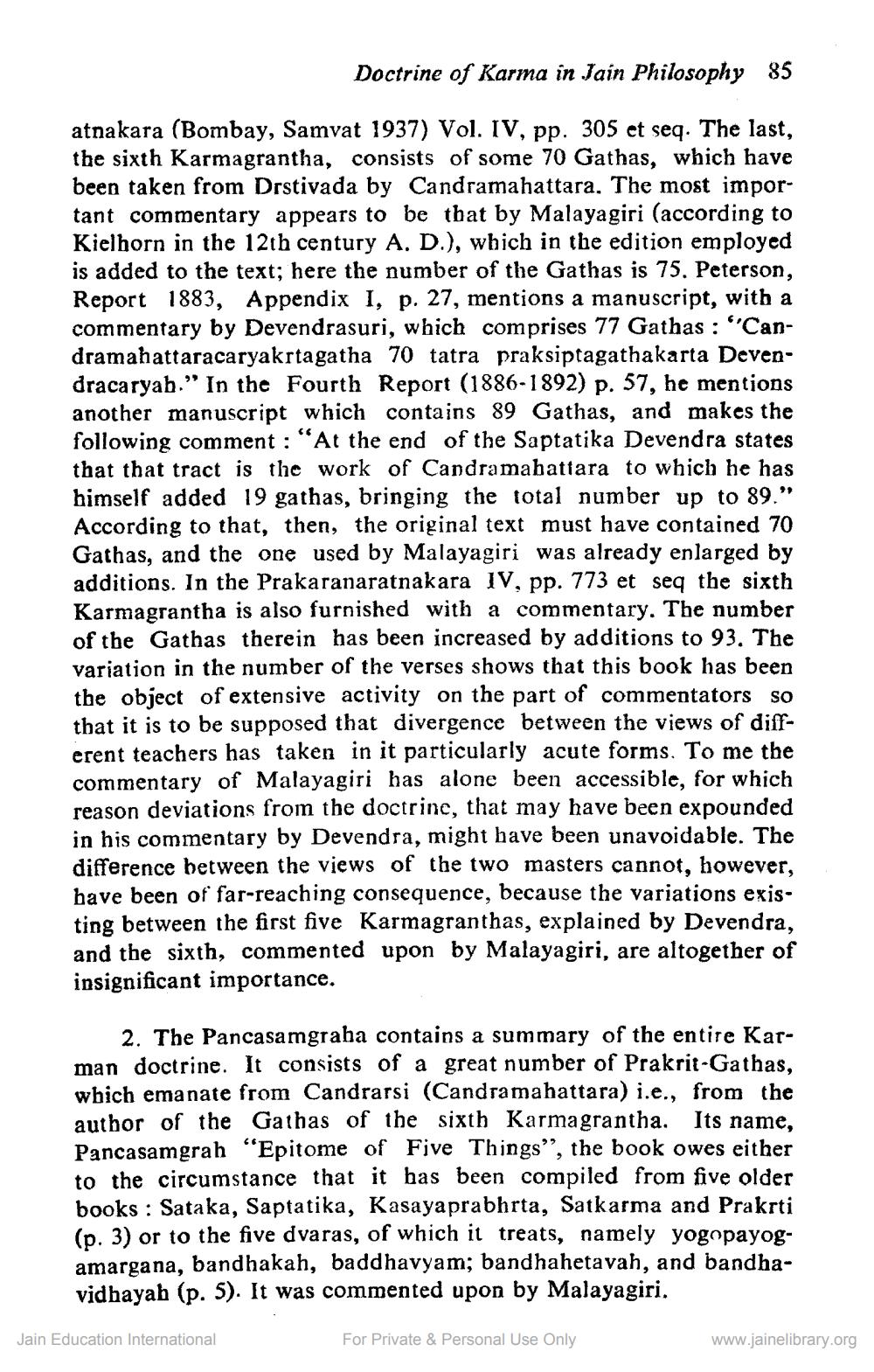________________
Doctrine of Karma in Jain Philosophy 85
atnakara (Bombay, Samvat 1937) Vol. IV, pp. 305 et seq. The last, the sixth Karmagrantha, consists of some 70 Gathas, which have been taken from Drstivada by Candramahattara. The most important commentary appears to be that by Malayagiri (according to Kielhorn in the 12th century A. D.), which in the edition employed is added to the text; here the number of the Gathas is 75. Peterson, Report 1883, Appendix I, p. 27, mentions a manuscript, with a commentary by Devendrasuri, which comprises 77 Gathas : ''Candramahattaracaryakrtagatha 70 tatra praksiptagathakarta Devendracaryab." In the Fourth Report (1886-1892) p. 57, he mentions another manuscript which contains 89 Gathas, and makes the following comment : "At the end of the Saptatika Devendra states that that tract is the work of Candramabattara to which he has himself added 19 gathas, bringing the total number up to 89." According to that, then, the original text must have contained 70 Gathas, and the one used by Malayagiri was already enlarged by additions. In the Prakaranaratnakara IV, pp. 773 et seq the sixth Karmagrantha is also furnished with a commentary. The number of the Gathas therein has been increased by additions to 93. The variation in the number of the verses shows that this book has been the object of extensive activity on the part of commentators so that it is to be supposed that divergence between the views of different teachers has taken in it particularly acute forms. To me the commentary of Malayagiri has alone been accessible, for which reason deviations from the doctrine, that may have been expounded in his commentary by Devendra, might have been unavoidable. The difference between the views of the two masters cannot, however. have been of far-reaching consequence, because the variations existing between the first five Karmagranthas, explained by Devendra, and the sixth, commented upon by Malayagiri, are altogether of insignificant importance.
2. The Pancasamgraba contains a summary of the entire Karman doctrine. It consists of a great number of Prakrit-Gathas, wbich emanate from Candrarsi (Candramahattara) i.e., from the author of the Gathas of the sixth Karmagrantha. Its name, Pancasamgrah “Epitome of Five Things”, the book owes either to the circumstance that it has been compiled from five older books : Sataka, Saptatika, Kasayaprabhrta, Satkarma and Prakrti (p. 3) or to the five dvaras, of which it treats, namely yogopayogamargana, bandhakah, baddhavyam; bandhahetavah, and bandhavidhayah (p. 5). It was commented upon by Malayagiri.
Jain Education International
For Private & Personal Use Only
www.jainelibrary.org




